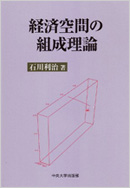Top>Opinion>Convenience Stores Thrive as Department Stores Falter
 Index
Index

Toshiharu Ishikawa [profile]
Convenience Stores Thrive as Department Stores Falter
- A Spatial Economics Perspective
Toshiharu Ishikawa
Professor, Faculty of Economics, Chuo University
Area of Specialization: Applied economics
Previously, I have theoretically analyzed the location of economic activity and urban systems. An overview of recent locational changes in various industries shows that they coincide relatively well with the results of theoretical analysis. Feeling able to successfully explain a few things, I have decided to put pen to paper.
Taking up the retail businesses that we use every day, I would like to concisely explain why convenience stores are thriving while department stores have lost their former vibrancy, and to discuss the issue of the ideal nature of urban systems.
Linking the features of retail businesses to their competition models
We can categorize retail businesses broadly into convenience stores, supermarkets and department stores. They each have the following features. Goods carried by convenience stores are low-priced and purchased by shoppers mainly for their convenience, while the distance between convenience stores is quite short. Supermarkets offer a selection of items centered on foods and household goods, and shoppers buy their staple products there. The distance between supermarkets is relatively long. Department stores sell many high-priced and known-brand good, and shoppers place maximum emphasis on selecting products according to their taste while paying careful attention to price. Although many department stores exist side by side in commercial areas with a high customer density, in other areas there is quite a distance between them.
These differences in features are linked the differences in competitive models between the various kinds of retail stores. If one convenience store plans to make a change such as lowering its prices by one yen or increasing its range by one item, it implements the change forecasting that its rivals may make the same kind of change (the Lösch competition model). Supermarkets adjust their prices and product range levels forecasting that their rivals will not make any changes (the Hotelling-Smithies model). And when department stores change their prices or product range levels, they assume their rivals will make an adjustment in the opposite direction (which seems rather strange, but is called the Greenhut-Ohta model). If competition among retail businesses proceeds according to their respective models, the businesses achieve a state of equilibrium which expresses the typical characteristics of that field very well.
Impact of fall in shipping rates on retailers
Analyses of the effects that intermittent drops in shipping rates caused by transportation upgrades have on retailers in various fields show the following results. Namely, due to falls in shipping rates:
- The market areas of convenience store businesses shrink and their product range levels fall.
- The market areas of department store businesses expand and their product range levels rise.
- The market areas of supermarket businesses shrink first but then expand. Their product range levels rise.
These results are very interesting, and the following conclusions can be drawn about the effect of falling shipping rates.
- The market areas needed by convenience store businesses shrink and their product ranges end up being reduced. Another feature of competition between convenience stores is that new rivals may be brought in from elsewhere, increasing the number of stores and further livening up the competition.
- The market areas needed by department store businesses expand and their product range levels increase. A feature of competition between department stores is that it drives a number of existing stores away from their market area or reduces their ability to operate as department stores. Competition between department stores has the somberness of a fight for survival, unlike the more upbeat nature of competition between convenience stores.
- Even if the product range levels required by supermarket businesses increase, the size of their market area remains the same without the kind of cutthroat competition that occurs between department stores. Rather, the status quo is maintained and competition between supermarkets remains the same.
So the characteristics of competition vary quite a lot. Although not discussed in detail here, the respective market areas required by the above types of retail businesses also expand as the population density of a community falls. As a result, some existing retail stores withdraw from the community. Needless to say, depopulation reduces the number of all kinds of retail store, triggering serious problems for the local economy as consumers have to travel further to do their shopping.
Reduction in number of department stores and polarization of urban systems
Previously, many department stores were located in large cities, with around two stores being seen in relatively large urban areas. As economic systems have developed and transportation improved, department stores have decreased in number in large cities because of their need for a wide market area, and they have disappeared altogether from midsize cities. In large cities, the department stores that survive have expanded in scale and, helped by the increasingly diverse preferences of consumers, remain busy. Department stores in midsize cities, however, are at higher risk as they have the difficult job of competing with their rivals in similar size cities and department stores in larger cities, and department stores in cities with relatively bad surrounding conditions have already withdrawn.
Department stores in a midsize city play a major role in the commercial activity of the surrounding area, and their disappearance impairs the city’s retail function, leading to the weakening of the city’s overall economic activity. This produces a big change in the urban system. That is, midsize cities disappear from the region and its urban system becomes polarized into large cities and small cities.
The decline of midsize cities is also brought about by changes in industrial location, and so the economic foundations of a good few midsize cities are being shaken. Urban systems polarized by the decline of midsize cities are sustainable in terms of economic efficiency but not necessarily desirable from the perspective of the soundness of the regional society as a whole. The formation of economic foundations that will revive cities is being accelerated, with the objective of regional reactivation.
- Toshiharu Ishikawa
Professor, Faculty of Economics, Chuo University
Area of Specialization: Applied economics -
Toshiharu Ishikawa was born in 1949. Having received a doctoral degree in Economics in July 1982 from the Graduate School of Economics, Chuo University, he took up his current position in April 1995 and became Director of the Institute of Economic Research, Chuo University in April 2012. The courses he teaches in the faculty and graduate school include spatial economics and economic location theory, and his current main research subjects include “the impact of transfer price taxation on the fragmentation of the production process and its location” and “the link between regional health and the urban system”. His recent major work is Constituent Theories of Spatial Economics [Keizaikuukan no soseiriron], Chuo University Press, 2013.

- Research Activities as a Member of Research Fellowship for Young Scientists (DC1), Japan Society for the Promotion of Science (JSPS) Shuma Tsurumi
- Important Factors for Innovation in Payment Services Nobuhiko Sugiura
- Beyond the Concepts of Fellow Citizens and Foreigners— To Achieve SDGs Goal 10 “Reduce Inequality Within and Among Countries” Rika Lee
- Diary of Struggles in Cambodia Fumie Fukuoka
- How Can We Measure Learning Ability?
—Analysis of a Competency Self-Assessment Questionnaire— Yu Saito / Yoko Neha - The Making of the Movie Kirakira Megane








